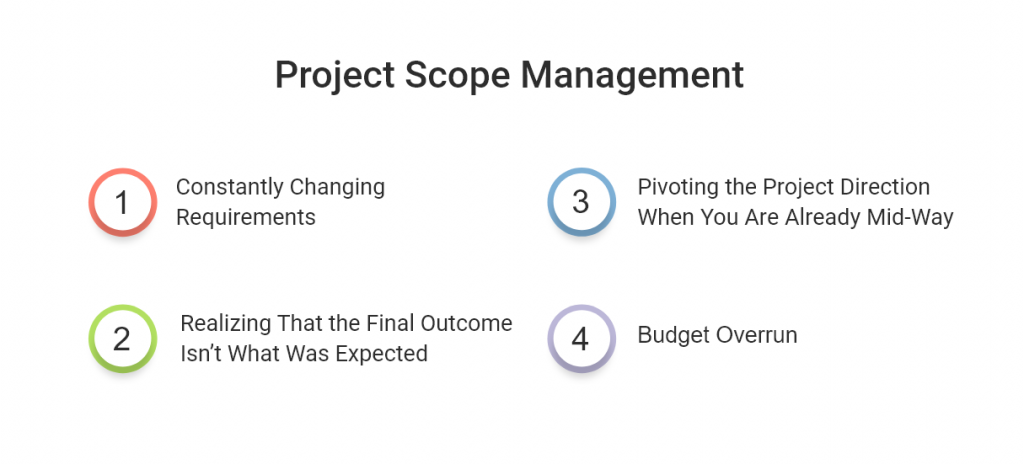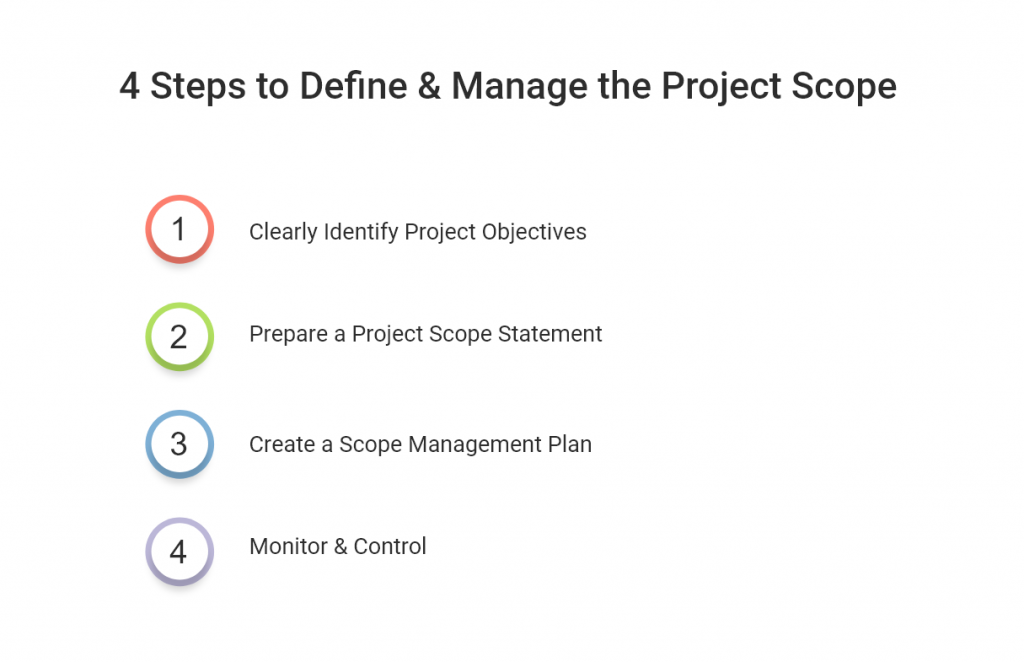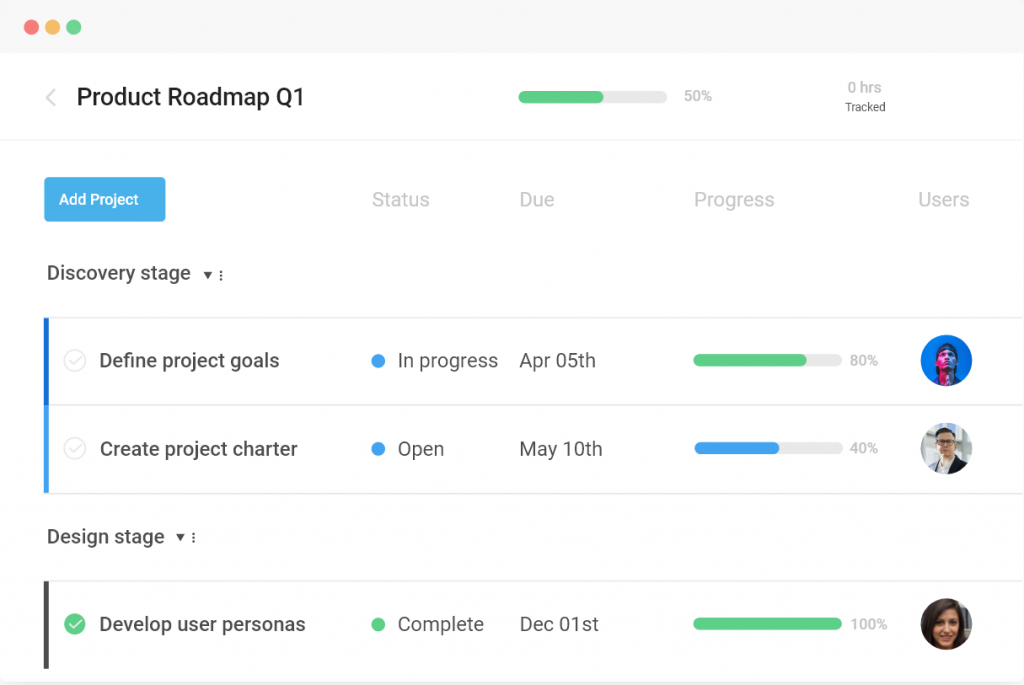In the project management industry, success hinges on one fundamental element: project scope.
Imagine embarking on a journey without a clear destination or map. That’s precisely why project scope holds immense importance—it defines the boundaries, objectives, and deliverables of a project and acts as a guiding beacon for the entire team.
Project scope serves as the foundation upon which a project is built. It outlines the project’s goals, defines what needs to be achieved, and sets the boundaries within which the team operates.
Without a well-defined project scope, projects can spiral into chaos, resulting in scope creep, missed deadlines, and budget overruns.
In this blog, we will define the project scope and explore its components, benefits, and best practices.
What Is Project Scope?
As per PMBOK, project scope is “The work that needs to be achieved to successfully deliver a service, product, or result with a specified set of functionalities and features.”
Project scope is one of the most important aspects of project management. It defines what your project is about, what it will deliver, and what it will not. It also sets the boundaries and expectations for your project, such as the goals, tasks, costs, and deadlines.
The key components of project scope include project objectives, goals, tasks, resources, budget, and schedule. This concept is not just about a list of things to do. It is a way of aligning your project team and stakeholders on the same vision and purpose.
Creating a project scope and abiding by it helps you avoid confusion, conflicts, and scope creep, which is bound to happen as your project expands beyond its original scope due to unplanned changes.
A well-defined project scope helps you plan and manage your project effectively. It also helps you communicate the project scope to your stakeholders and clients, and get their approval and feedback.
By having a clear and realistic project scope, you can increase the chances of delivering successful projects that meet your expectations.
Now that you know what the scope of a project means, let’s understand why project scope management is important.
Why Is Project Scope Management Important?

Project scope management is important because it helps to avoid common issues such as:
Constantly Changing Requirements
Adapting to evolving requirements is a common challenge. Despite careful planning, incorporating new changes to meet the changing client or market demands is often necessary.
Effective project scope management is vital for successful project delivery amidst these changes. It ensures flexibility in accommodating evolving requirements, enabling you to meet client expectations and achieve project goals.
Pivoting the Project Direction When You Are Already Mid-Way
Efficient project scope management plays a crucial role in navigating mid-project pivots. It allows for the inclusion of new tasks and timelines while maintaining control. By integrating change management practices, you can streamline workflows and enables real-time monitoring of progress.
This proactive approach ensures that projects stay on track and adapt smoothly to shifting directions, minimizing disruptions and maximizing overall project success.
Realizing That the Final Outcome Isn’t What Was Expected
During the final stages of a project, it becomes apparent if the desired outcome is not being met. This is the right moment to assess progress and ensure alignment with expectations.
Timely scope management is key in rectifying any deviations and delivering the project as envisioned. You can make the necessary adjustments and take corrective actions to align the final product with the intended goals, thus ensuring successful project completion.
Read More: Managing Project Expectations: How to Do It Right
Budget Overrun
When a project exceeds the allocated budget, it becomes necessary to reevaluate and adjust the scope to align with the available resources. This ensures that key deliverables can still be achieved within the project’s defined constraints.
Making scope adjustments helps you manage costs, optimize resource utilization, and maintain project feasibility. This allows for the successful completion of essential project objectives while keeping the budget under control.
Alright, when it comes to handling project scope, a smart move is kicking off with a project scope statement. But what’s that, you ask? Let’s find out!
What Is a Project Scope Statement?
A project scope statement is like a roadmap that outlines the boundaries and objectives of a project. It sets the stage for success by clearly defining what needs to be accomplished and what is out of scope. Think of it as a guiding document that keeps everyone on the same page, ensuring that the project stays on track.
Within a project scope statement, you’ll find key elements such as project objectives, deliverables, and milestones. It also outlines the project’s constraints, assumptions, and risks, providing you with a comprehensive view of the project’s boundaries.
This document acts as a reference point throughout the project lifecycle, helping you manage expectations and make informed decisions.
A well-crafted project scope statement acts as a communication tool, aligning stakeholders and team members with a shared understanding of the project’s goals. By clearly identifying the scope of projects and defining it, you minimize the likelihood of scope creep, where the project veers off course due to uncontrollable changes or additions.
Also, within the project scope statement lies a crucial component: the definition of what constitutes scope creep. Let’s take a moment to familiarize ourselves with this concept.
Now that you know what a project scope statement is, let’s learn how to write a project scope and manage it throughout a project’s lifecycle.
Mastering Project Scope: 4 Steps to Define & Manage the Project Scope

Here are some simple steps that will help you establish a project scope and manage it from start to finish.
1. Clearly Identify Project Objectives
Clearly identifying project objectives is the first step toward establishing a well-defined project scope.
Project objectives serve as the guiding principles that shape the project’s purpose and desired outcomes. By setting clear objectives, project managers can effectively determine the boundaries and parameters within which the project will operate.
Engaging stakeholders in this process is crucial to creating a precise project scope. Stakeholders bring valuable insights, expertise, and diverse perspectives to the table.
This collaborative approach ensures that the project scope reflects the needs and aspirations of all stakeholders, leading to a more accurate and realistic definition of the project’s boundaries and deliverables.
2. Prepare a Project Scope Statement
A project scope statement is a document that serves as a roadmap, outlining the project’s objectives, boundaries, and deliverables. Defining deliverables is essential to clearly identify the tangible outcomes that the project will produce.
These deliverables act as milestones that provide a measurable and trackable framework for project progress.
Setting boundaries and constraints is equally important in a project scope statement.
Boundaries define what should be included and excluded from the project, ensuring a clear understanding of its scope. Constraints, such as budget, time, and resources, establish the limitations within which the project must operate.
This clear-cut framework aids in effective project planning, execution, and control.
3. Create a Scope Management Plan
To create a scope management plan, you need to conduct risk assessment.
In this step, potential risks and uncertainties that can impact the project’s scope are identified and evaluated. This way, you can develop mitigation strategies to minimize their impact and ensure scope stability.
Also, establishing a change control system is another crucial aspect of preventing uncontrolled scope expansion. This involves implementing a structured process to evaluate, approve, and implement changes to the project scope.
Creating an effective communication plan and documenting it is also paramount. This works great to keep everyone involved in the project and help them gain complete understanding of the scope management process.
The documentation should include changed logs and any revised deliverables. This clear and comprehensive documentation will help you ensure accountability and provide a reference point for future decision-making.
4. Monitor & Control
Regular monitoring of the scope of the project allows you to track progress, identify potential scope deviations, and take proactive measures to ensure project success. This way, you can implement effective control measures while managing scope changes and assessing their impact.
You can also utilize work management tools like ProProfs Project to establish workflows and keep things in check.
It allows you to establish well-defined workflows and keep the project scope in your control. You can efficiently track the progress of tasks, collaborate with team members, and stay updated on any scope changes or deviations that may arise.
Continuous scope monitoring and control allows you to stay on track and address any deviations at the earliest. This way you can ensure that the project remains aligned with its defined objectives throughout the process.
Now that you have learned the steps, let’s explore how a project management software can facilitate this process and be your best friend for efficient project scope management.
How Project Management Software Simplifies Scope Creep Management
Wondering how project management software simplifies scope creep management? It provides real-time visibility and effective tracking to ensure projects stay on track and within defined boundaries.
Keep reading!
By using the right software, you can plan, prioritize, and monitor tasks effectively.
You wish to add tasks, prioritize some, and delegate to users?
Just a few clicks, and you’re done!
You can set up your project dashboard and see the entire roadmap at a glance.

This way, you will know exactly how your project is progressing and whether it is going as planned. You will also gain a clear overview of tasks, milestones, and progress.
Such software solutions also facilitate effective communication, collaboration, and documentation, ensuring that all stakeholders are on the same page regarding scope boundaries and deliverables.
Team members and stakeholders can also connect via task comments and discuss things in real time.
Also, work management tools allow seamless change management in case of scope changes. You can re-prioritize tasks, adjust timelines, and delegate tasks to new users within seconds. The software also sends out email notifications to concerned team members as soon as you make changes within the project dashboard.
What more? You can even extract key insights from project reports to make informed decisions on the go.
By now, you must have a fair understanding of how to manage project scope using the right tool. But let’s also briefly look at some best practices for scope change control and communication.
Read More: Project Management Best Practices For Managers
Best Practices for Scope Change Control & Communication
Here is how you can manage scope creep with precision:
- Establish a Formal Change Control Process: Implement a structured and documented process for managing scope changes. Clearly define the steps, responsibilities, and approval mechanisms required for evaluating, approving, and implementing scope changes.
- Clearly Define Change Request Requirements: Clearly communicate the information and documentation required for submitting a change request. This ensures that stakeholders provide comprehensive details about the proposed change, including the impact on project objectives, timelines, budget, and resources.
- Evaluate Change Requests Objectively: Assess each change request objectively, considering its alignment with project goals, impact on scope, feasibility, and potential risks. Involve relevant stakeholders in the evaluation process to gather diverse perspectives and make informed decisions.
- Prioritize & Rank Change Requests: If multiple change requests are received, prioritize them based on their urgency, impact, and alignment with project objectives. This helps in managing changes and allocating resources effectively.
- Communicate Change Decisions Promptly: Once a change request has been evaluated and a decision has been made, promptly communicate the outcome to the relevant stakeholders. Clearly convey whether the change has been approved, rejected, or deferred, along with the reasons behind the decision.
- Update Project Documentation: Maintain accurate and up-to-date project documentation, including the project scope statement, change logs, and revised deliverables. Ensure that all stakeholders have access to the latest project information to prevent confusion and misalignment.
- Monitor & Control Scope Changes: Continuously monitor and control scope changes throughout the project lifecycle. Regularly review and assess the impact of approved changes on project objectives, timelines, budget, and resources. On top of that, you also need to take proactive measures to address any potential scope creep or deviations.
Following these best practices will help you manage scope changes and maintain clear and effective communication throughout the project, ensuring project success.
And that’s it! That’s how you keep things in control and tackle scope creep in project management effectively.
Achieve Long-Term Success by Effectively Managing Project Scope
Scope creep in project management is quite common and can sneak into your projects silently, leaving you feeling powerless.
However, with effective planning, seamless execution, and timely change control, you can conquer scope creep and pave the way for a successful journey. By clearly defining boundaries and being laser-focused on your goals, you can achieve remarkable precision in project delivery.
Prepare to take charge, master project scope, and fearlessly tackle projects no matter what comes up. With the right strategies in place, you can conquer scope creep and achieve outstanding outcomes.
FAQ
Q. What is included in project scope?
The project scope includes the major deliverables of a project, key milestones, and requirements. It also includes constraints, assumptions, and boundaries of a project.
Q. What are project deliverables in project scope?
Project deliverables in project scope include documents, services, or results that need to be completed during project execution.
Q. What is the difference between project scope and project deliverables?
Project scope can be defined as work that is broken down into smaller tasks to achieve the project goals. On the other hand, project deliverables are measurable and tangible results that must be successfully produced for project completion.
FREE. All Features. FOREVER!
Try our Forever FREE account with all premium features!




